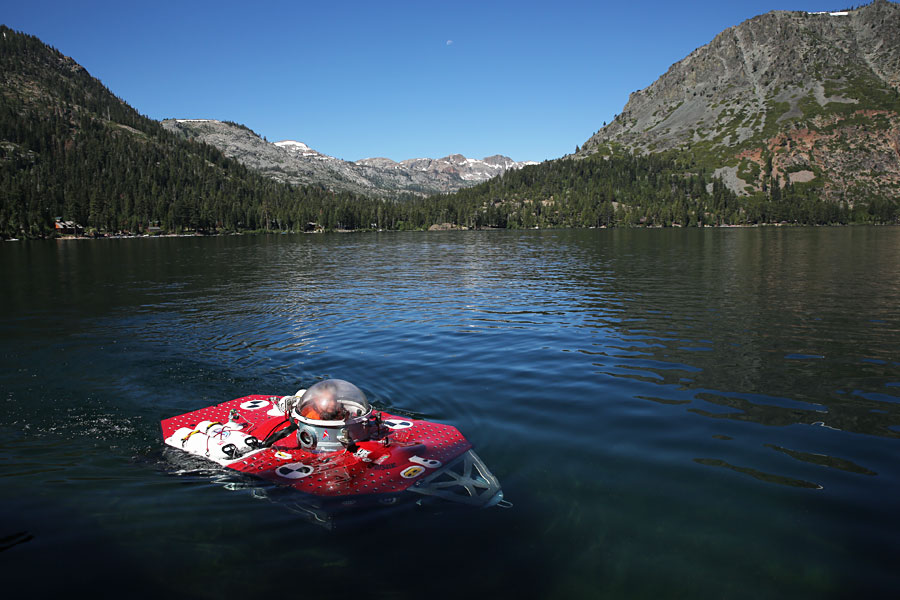Earlier this summer, the Undersea Voyager Project, a nonprofit organization located in Napa, California, conducted a series of dives in their 2-man submersible to explore dozens of ancient trees still standing at the bottom of Fallen Leaf Lake. Beginning this weekend, they will continue their mission to document the trees and study one theory of how they got there.
Fallen Leaf Lake is located less than a mile south of Lake Tahoe, at 6,300 feet in elevation, in a valley carved out of granite by two massive glaciers. The lake is now 3 miles long, just under a mile wide, and 410 feet deep at its deepest point. It’s one of the more beautiful alpine lakes in California and surrounded by small, private cabins and a narrow, winding one-lane road.
Related: Solving A Mile-High Mystery: Explorers Study Ancient Underwater Forest at Fallen Leaf Lake
In the missions earlier this summer, mission leader and submarine pilot Scott Cassell dove to the bottom of the lake to the bases of the ancient trees, some of which have been carbon-dated to more than 3,000 years old. The trees are anchored by their root balls, which are still grasping firmly onto the rocks they grew around. Many of these trees stand almost fully upright and reach towards the surface and some measure nearly 90 feet tall.
How the trees got there is the subject of several conflicting theories. One states that the trees grew there during an ancient drought, and a second theory is that the trees actually slid off the nearby steep mountainside as the result of seismic activities over the centuries. The evidence found earlier this summer by the Undersea Voyager Project seems to conclude the second theory; all of the trees found so far have their roots sheared off just beyond their root balls (possibly from toppling down the granite slopes), and they sit on top of underwater planes of solid, flat granite.
“The trees themselves are telling their own stories”, says Scott Cassell. “Based on all of our observations so far, it’s apparent that the trees did not grow where we found them. We’re now going to map the locations of the trees and see if we can find more information to support or disprove this theory.”
In addition to exploring the ancient trees, the Undersea Voyager Project has found several other items of interest that aren’t nearly as old, and not designed by mother nature. In the late 1800’s and early 1900’s, local residents used to dump all of their garbage in the lake, many of which are perfectly preserved in the cold, high elevation lake.
The Undersea Voyager Project is a non profit (501-c-3) public-benefit company for Oceanic Research and Educational Outreach. All of the data collected from their missions is available to anyone to help further science and scientific research, including the data from the current mission at Fallen Leaf Lake. For more information, visit their website here. They are also seeking volunteers and sponsors to help support this mission and future research missions. Donations can be made directly through PayPal here, or by contacting them by email here.


